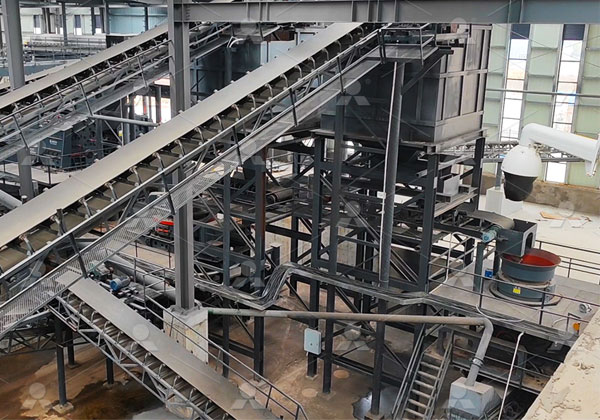Copper ore beneficiation is a process to extract copper from raw ores. Several methods are available to process copper ores, each method catering to different types of ores and minerals. The process typically involves crushing, grinding, and flotation, among other stages, to separate and concentrate the copper content.
The beneficiation process begins with the extraction of copper ore from mines. Copper ores can be classified into sulfide ores, oxide ores, and mixed ores, each requiring different beneficiation methods. Sulfide ores, containing copper minerals such as chalcopyrite (CuFeS2), are often processed through crushing and grinding followed by flotation. On the other hand, oxide ores, which contain copper oxide minerals like malachite (Cu2(OH)2CO3) and azurite (Cu3(CO3)2(OH)2), may undergo leaching and solvent extraction.

The beneficiation process can be broken down into several key stages:
- Crushing and Grinding: The extracted copper ore is first crushed into small particles and then ground into a fine powder. This increases the surface area of the ore, facilitating the subsequent processes.
- Flotation: Flotation is a widely used method to separate copper minerals from the gangue (unwanted materials). In this process, the ground ore is mixed with water and chemicals to create a slurry. Air bubbles are then introduced, and the copper minerals attach to the bubbles, rising to the surface as a froth. The froth is collected and further processed to obtain concentrated copper.
- Leaching: For oxide ores, leaching is a common method where the crushed ore is treated with a leaching agent, usually sulfuric acid, to dissolve the copper minerals. The resulting solution, known as the pregnant leach solution (PLS), contains dissolved copper.
- Solvent Extraction: Solvent extraction is employed to separate the copper from the PLS. Organic solvents are used to selectively extract copper from the solution, leaving impurities behind.
- Electrowinning: The copper-rich solution obtained from solvent extraction is subjected to electrowinning. This involves passing an electric current through the solution, causing copper ions to plate onto electrodes. The resulting copper cathodes are then collected.
- Dewatering and Smelting: The concentrated copper obtained from the flotation process or the electrowinning step is often dewatered to reduce moisture content. Subsequently, the dried concentrate may undergo smelting, where it is melted to extract impurities and produce blister copper.
- Refining: The blister copper is further refined through processes such as fire refining or electrolytic refining to achieve the desired purity level.
- Copper Products: The refined copper can be cast into various forms, such as ingots or sheets, and further processed to manufacture a wide range of copper products.
Throughout the beneficiation process, environmental considerations and sustainable practices are crucial. Efforts are made to minimize the environmental impact by managing waste products responsibly and optimizing resource usage. Additionally, water and energy efficiency are important aspects of sustainable copper ore beneficiation. Continuous research and development are conducted to improve the efficiency and environmental performance of copper beneficiation processes.
